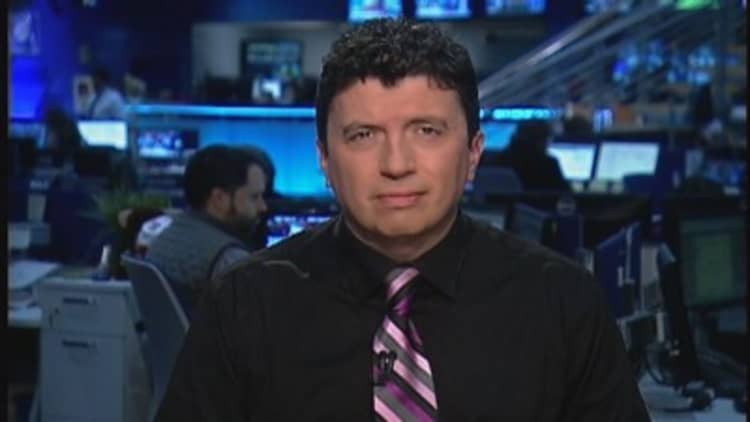
Unemployment will have to drop a good deal further before the Federal Reserve begins to raise interest rates, if the central bank follows recommendations from its own economists.
Separate papers that will be presented formally this week at an International Monetary Fund meeting suggest that the U.S. central bank should lower its target for the jobless rate before it hikes rates. (The two papers can be found here, by William English, David Lopez-Salido and Robert Tetlow, and here, by David Reifschneider, William Wascher and David Wilcox.)
Under current Fed thinking, the unemployment rate would have to drop to just 6.5 percent—with the inflation rate rising to 2.5 percent—before making changes in the present structure, which has the policy target rate near zero.
But the research from a half-dozen Fed economists maintains the unemployment objective actually should be lowered to 6.0 percent or even 5.5 percent before it makes any moves.

Models used in the reports show that the economy simply will perform better if the Fed holds off. But there also is a mix of market expectations and some unusual trends in the current labor situation that call for a less aggressive rate-hike schedule.
The implications are huge: Fed monetary policy has been a cornerstone of growth since an ultra-easy stance was adopted following the financial crisis. Companies have used cheap financing to raise record levels of debt capital, and the stock market has soared to new heights thanks to the liquidity provided by the quantitative easing bond-buying program. The central bank balance sheet most recently stood at more than $3.8 trillion.
(Read more: US balance sheet $16 trillion in the hole: Bove)
Markets shuddered in May when Fed Chairman Ben Bernanke suggested that the third round of QE was reaching an end. A quick rise in interest rates and drop in stocks quickly reversed on the realization that even if the $85 billion a month program was pared back, rates would remain low.
According to an analysis from Jan Hatzius, chief economist at Goldman Sachs, the two Fed papers actually would imply an earlier reduction of QE than planned—perhaps as soon as December—while the zero-bound interest rates could remain in place until 2017 and kept below normal into "the early 2020s."
"The studies suggest that some of the most senior Fed staffers see strong arguments for a significantly greater amount of monetary stimulus than implied by either a Taylor rule or the current 6.5 percent/2.5 percent threshold guidance," Hatzius wrote. "Given the structure of theFederal Reserve Board, we believe it is likely that the most senior officials—in particular, Ben Bernanke and (Chair-elect) Janet Yellen—agree with the basic thrust of the analysis."
(The Taylor Rule is a formula that determines the amount of monetary stimulus that should be provided given economic conditions.)
(Read more: Taper tease? Market worries Fed will end easing)
Hatzius believes the Fed may not deliver the news of a lowered threshold until the March Fed Open Markets Committee meeting.
As Bernanke, Yellen and others have recognized, the unemployment rate has been a difficult gauge of economic conditions. The headline rate has fallen to 7.2 percent, but due in substantial part to a 35-year low in labor-force participation that has led to many jobless Americans simply not being counted.
That low participation rate could be lasting.
"The recession and slow recovery may impair job matching and other aspects of labor market functioning for quite a few years," the Wilcox report stated. "Moreover, these same conditions may lead a significant number of older workers to drop out of the labor force permanently at an earlier age than otherwise would have occurred, thereby depressing the participation rate for possibly a decade or more."
The study also concluded that a substantial decrease in emergency unemployment benefits has done little to get people back to work, suggesting that the current jobless level isn't just a cyclical phenomenon.
(Read more: The economy? Who cares? The stock market is up!)
Markets have grown accustomed to having the Fed firmly in place, so news of a delay in rate increases should be pleasant.
However, expectations already may have priced in a long wait for a hike, so the impact might be muted.
"The reason why it wouldn't necessarily be as market bullish as you'd think is because everybody knows why they're going to do it," said Dave Lutz, managing director of trading at Stifel Nicolaus. "It's a massive decline in participation rate going on. There's still a tremendous amount of slack."
—By CNBC's Jeff Cox. Follow him on Twitter @JeffCoxCNBCcom.






